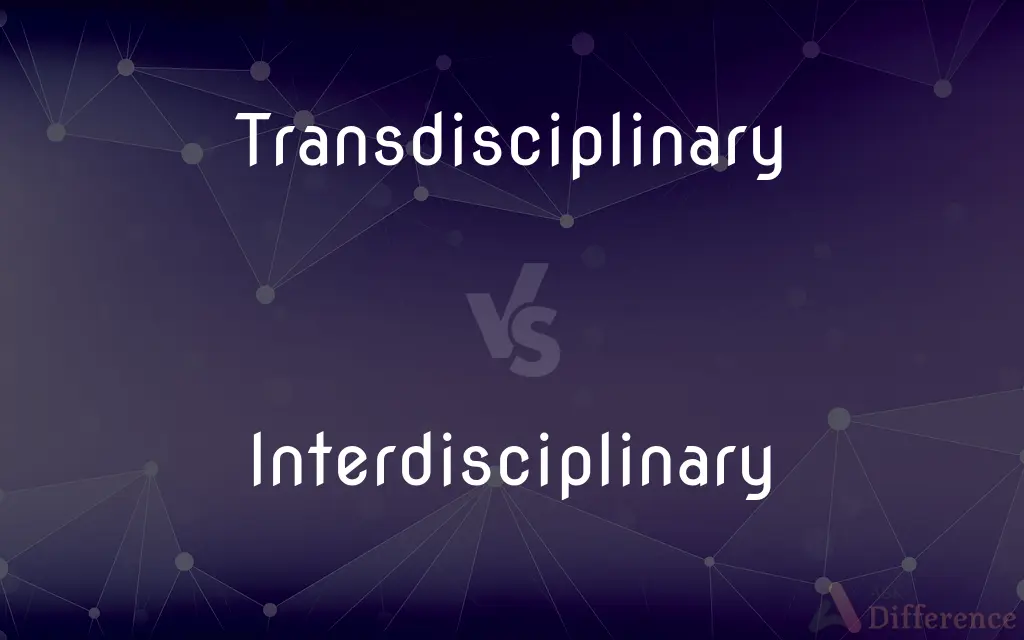Understanding The Value Of Interdisciplinary And Transdisciplinary Methods

Table of Contents
Enhanced Problem-Solving Capabilities through Interdisciplinary and Transdisciplinary Approaches
Combining diverse perspectives is crucial for tackling complex challenges. Interdisciplinary approaches, integrating multiple disciplines within a single project, and transdisciplinary approaches, going beyond disciplinary boundaries to involve stakeholders outside academia, foster more comprehensive and innovative solutions than traditional siloed research. This synergistic effect leads to truly integrated knowledge and synergistic solutions.
- Example 1: The design of sustainable infrastructure requires expertise from various fields. Engineers focus on structural integrity, sociologists consider community needs and impact, and environmental scientists assess ecological consequences. Combining these perspectives ensures a truly sustainable and community-beneficial outcome.
- Example 2: Addressing complex societal issues like poverty or healthcare access requires a multi-faceted approach. Interdisciplinary teamwork, encompassing economists, social workers, healthcare professionals, and policymakers, can lead to more effective solutions tailored to specific community needs and utilizing multidisciplinary teamwork. This collaborative approach fosters better understanding of root causes and develops more targeted interventions.
- The combined skill sets and knowledge bases create a synergistic effect, where the outcome is greater than the sum of its parts. This is a core benefit of collaborative problem-solving.
Breaking Down Silos and Fostering Collaboration
Traditional disciplinary boundaries often hinder progress. Siloed research, where different disciplines work in isolation, limits the potential for innovation and comprehensive understanding. Collaborative research, whether interdisciplinary or transdisciplinary, demands breaking down these silos and fostering open communication and knowledge sharing.
- Challenges of siloed research: Limited perspective, duplication of effort, and failure to address complex problems holistically.
- The role of communication and collaboration: Effective communication protocols, shared goals, and mutual respect are vital for successful interdisciplinary projects. This cross-disciplinary collaboration enhances the quality of research and its practical applications.
- Strategies for fostering effective teamwork: Regular meetings, shared online platforms, collaborative writing sessions, and clearly defined roles and responsibilities are essential for creating a cohesive and productive team environment. This robust interdisciplinary communication is key.
The Role of Transdisciplinarity in Addressing Complex Real-World Challenges
Transdisciplinary approaches distinguish themselves by involving stakeholders beyond academia. This participatory approach integrates the knowledge and perspectives of policymakers, community members, and practitioners, ensuring that research is relevant, impactful, and addresses real-world needs.
- Examples of successful transdisciplinary projects: Community-based participatory research to address public health issues, collaborative urban planning initiatives, and projects aimed at achieving sustainable development goals. These projects benefit from robust stakeholder engagement.
- The importance of co-creation and participatory research methods: These methods empower stakeholders to actively shape the research process, ensuring that research outcomes directly benefit the communities involved. The real-world application of findings is crucial here.
- The benefits of involving diverse stakeholders: Greater relevance, increased buy-in from stakeholders, improved implementation, and broader societal impact are all advantages of this transdisciplinary collaboration. The impact directly influences the societal impact of the research.
Challenges and Considerations in Implementing Interdisciplinary and Transdisciplinary Methods
While offering significant advantages, interdisciplinary and transdisciplinary methods present unique challenges:
- Communication difficulties: Differences in terminology, research methodologies, and communication styles can hinder effective collaboration. This requires proactive strategies for overcoming communication barriers.
- Managing diverse research methodologies: Integrating different research approaches requires careful planning and coordination. This calls for robust project management and clear definitions of roles.
- Time constraints and funding limitations: Interdisciplinary projects often require more time and resources than traditional research. This highlights the importance of developing strategies for securing funding opportunities. Effectively navigating these interdisciplinary research challenges is critical for success.
Conclusion: Unlocking the Potential of Interdisciplinary and Transdisciplinary Methods
Employing interdisciplinary and transdisciplinary methods offers significant advantages: improved problem-solving, enhanced collaboration, and greater societal impact. These approaches are crucial for addressing complex challenges facing society today. By breaking down traditional disciplinary silos and fostering open communication, we can unlock innovative solutions and achieve greater success in research and practice. Embrace the power of interdisciplinary and transdisciplinary methods to unlock innovative solutions. For further reading on fostering successful collaborative research, explore resources available at [link to relevant resources].

Featured Posts
-
 European Futures Market Update Swissquote Bank Perspective
May 19, 2025
European Futures Market Update Swissquote Bank Perspective
May 19, 2025 -
 Analiza Polskich Preselekcji Eurowizji Nieoczekiwane Wyniki I Najwieksze Rozczarowania
May 19, 2025
Analiza Polskich Preselekcji Eurowizji Nieoczekiwane Wyniki I Najwieksze Rozczarowania
May 19, 2025 -
 Duelo En El Tenis Rafa Nadal Lamenta La Perdida De Una Leyenda
May 19, 2025
Duelo En El Tenis Rafa Nadal Lamenta La Perdida De Una Leyenda
May 19, 2025 -
 Cooke Maroney And Jennifer Lawrence Couple Seen Together After Second Child News
May 19, 2025
Cooke Maroney And Jennifer Lawrence Couple Seen Together After Second Child News
May 19, 2025 -
 Fallece Juan Aguilera Primer Espanol En Ganar Un Masters 1000
May 19, 2025
Fallece Juan Aguilera Primer Espanol En Ganar Un Masters 1000
May 19, 2025
